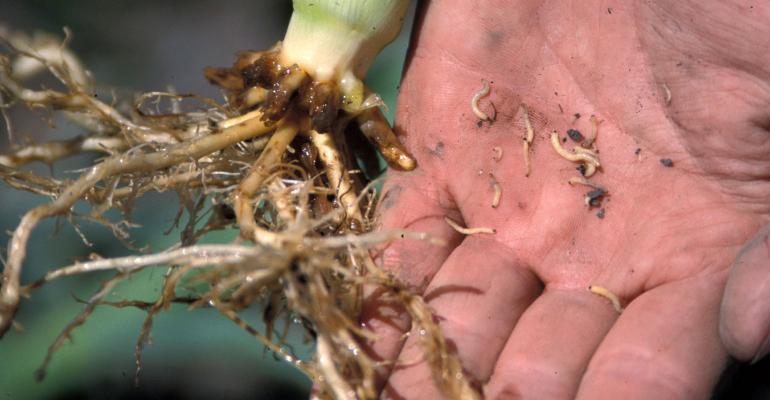Should you stay with rootworm-traited corn?

Corn Pest Beat: Can you switch to non-traited corn and save money?
Aug 31, 2022
We haven’t been planting Bt rootworm-traited corn to save on seed costs. My son noticed some corn rootworm beetles while walking soybeans to assess yields. Should we go back to Bt rootworm corn next year?
The panel of Indiana certified crop advisers answering this question includes Steve Gauck, regional agronomy manager for Beck’s, Greensburg; Andy Like, agronomist with Evansville AgriSelect LLC, Vincennes; Dan Quinn, Purdue Extension corn specialist, West Lafayette; and Dan Ritter, central region agronomist with Dairyland Seed, Rensselaer.
Gauck: Bt rootworm corn is an insurance policy. Once you have a rootworm problem in corn in-season, there is no way to treat or rescue that crop. What risk are you willing to take? Rootworm beetles in soybeans doesn’t always mean they will be an issue next year, but you now know they could be. Evaluating the number of adult beetles in soybeans in late summer can help determine pressure for next year. If you want to keep seed cost down, is there a way to apply insecticide with your planter that is more cost-effective? If you are in an area with a history of rootworm pressure, take action to prevent an issue next year.
Like: Have you historically had problems with rootworm pressure in these fields? Do your neighbors have issues with rootworm pressure? If both answers are no, you will likely be fine forgoing the rootworm trait. Consult with a local, experienced agronomist if you’re still unsure of the right decision. Rootworm pressure in many cases is very geographical. If you’re outside of the high-pressure geography, it’s typically not a problem.
Quinn: Scout your corn and look for any rootworm beetles and/or rootworm damage in those fields that could indicate potential yield loss. For example, did you see rootworm beetles feeding on corn silks during pollination? Look for noticeable lodging issues in certain areas of fields after a wind or storm event. That may indicate potential rootworm damage.
Crop rotation and seed treatments can help control rootworm in non-Bt corn. However, if significant damage is occurring, yield is lost and economic losses occur, it may also require an insecticide application. It’s an additional expense, but it may be worth switching back to Bt corn with rootworm control.
Ritter: I work in several states, and the intensity of corn rootworm varies by region, soil type and cropping systems. Typically, western Indiana has the heaviest corn rootworm pressure in the state. The use of rootworm-traited corn over the years has helped lower rootworm levels in general. As we back off the use of rootworm-traited corn, we’re seeing a slight increase in rootworm numbers.
Recent weather patterns of drier periods during larval hatch also contribute to more larvae surviving through adulthood. Yellow sticky traps in soybeans are a good option to monitor adult corn rootworm levels and assist in predicting levels for the next year. However, this is done in July around tasseling. In future years you may want to use this method to assist you in decision-making.
My recommendation is to select the best hybrids for your farming operation. It may or may not have a corn rootworm trait. If the best hybrid has aboveground insect protection only but you feel you need rootworm protection, look at seed-applied or in-furrow root protection that fits your rootworm levels.

